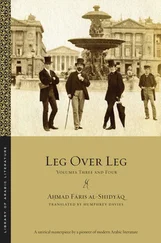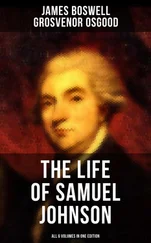15Daniel Temple to William Jowett, July 25, 1828, Church Missionary Society Archives CMS/CMO/ 39/121; emphasis Temple’s.
16Christopher Schlienz to Society Secretary, February 3, 1836, Church Missionary Archives CMO/65/44A; Christopher Schlienz to William Jowett, May 20, 1828, Church Missionary Society Archives CMO/65/4A.
17Aḥmad Fāris al-Shidyāq, Al-Wāsiṭah fī maʿrifat aḥwāl Mālṭa (Beirut: al-Muʾassasah al-ʿArabiyyah li-l-Dirāsāt wa-l-Nashr, 2004), chap. 2.
18Theodor Müller to Christopher Schlienz, June 15, 1830, Church Missionary Society Archives CMS/CMO 73/47.
19Buṭrus Yūsuf Ḥawwā: one of a group of Lebanese merchants living in London, on whom al-Shidyāq depended for financial and moral support during his third sojourn there, between June 1853 and the summer of 1857, during which period he was also visiting Paris to oversee the printing of Al-Sāq ; Ḥawwā provided al-Shidyāq with employment as a clerk in his offices.
20See Geoffrey Roper, “Aḥmad Fāris al-Shidyāq and the Libraries of Europe and the Ottoman Empire,” Libraries & Culture 33, no. 3 (Summer 1998), 235. For the names of the scholars with whom al-Shidyāq made contact, see Alwan, 42–45.
21Aḥmad Fāris al-Shidyāq, Mumāḥakāt al-taʾwīl fī munāqiḍāt al-injīl [ Altercations of Interpretation: On Contradictions in the Gospels ] (Amman: Dār Wāʾil li-l-Nashr wa-Tawzīʿ, 2003). For a discussion of its contents and technique, see Al-Bagdadi, 375–401.
22There is no empirical evidence for the exact date or place of his conversion, which might also have occurred while he was in Tunis, Paris, or London. Al-Shidyāq, in fact, began an intellectual relationship with Islamic scholars while in Egypt and continued to pursue, in the libraries of Cambridge and London, his interest in linguistic and literary texts produced during Islam’s golden age. And, as Humphrey Davies notes in the translator’s Afterword, his invocation of Islamic motifs in Leg over Leg might indicate that he converted before its 1855 publication — as he deploys specifically Islamic formulae on more than one occasion, even going so far as to say, regarding a Christian woman, that “she had converted to Islam, praise be to God, Lord of the Worlds” (2.4.16). For more on al-Shidyāq’s textual studies in England see Roper, “Aḥmad Fāris al-Shidyāq and the Libraries of Europe and the Ottoman Empire,” 236–41.
23Ami Ayalon, The Press in the Arab Middle East: A History (Oxford: Oxford University Press, 1995), 30.
24Ayalon, 30.
25Geoffrey Roper, “Fāris al-Shidyāq and the Transition from Scribal to Print Culture,” in The Book in the Islamic World: The Written Word and Communication in the Middle East , edited by George N. Atiyeh (Albany: State University of New York Press, 1995), 214.
26Al-Shidyāq, Al-Wāsiṭah , 382. Cited in Roper, “Scribal to Print Culture,” 214.
27Jurjī Zaydān, Tarājim mashāhīr al-Sharq fī l-qarn al-tāsiʿ ashar (Cairo: Maṭbaʿat al-Hilāl, 1922), 2:87.
28Walid Hamarneh, “Ahmad Fāris al-Shidyāq,” Essays in Arabic Literary Biography: 1850–1950 , edited by Roger Allen (Wiesbaden: Otto Harrassowitz, 2010), 327.
29Kamran Rastegar, Literary Modernity between the Middle East and Europe: Textual Transactions in Nineteenth-century Arabic, English, and Persian Literatures (New York: Routledge, 2007), 109.
30Sabry Hafez, Genesis of Arabic Narrative Discourse: A Study in the Sociology of Modern Arabic Literature (London: Saqi Books, 1993), 47.
31The maqāmah (plural maqāmāt ), or “session,” is a genre popularized by Aḥmad Badīʿ al-Zamān al-Hamadhānī in the fourth/tenth century. Considered the first avowedly fictional literary genre in Arabic, al-Hamadhānī’s maqāmāt narrated, in rhyming prose, the adventures of Abū l-Fatḥ al-Iskandarī, a vagabond trickster figure who earns his living by outwitting his companions with his verbal dexterity. For an introduction to the maqāmāt , see Abdelfattah Kilito, Les séances (Paris: Sindbad, 1983).
32These include a commentary on al-Fīrūzābādī’s Al-Qāmūs , entitled Al-Jāsūs ʿalā l-Qāmūs (Istanbul: al-Jawāʾib, 1882), an edition (with introduction) to Ibn al-Manẓūr’s fourteenth-century lexicon, Lisān al-ʿArab , 20 vols. (Cairo: Bulāq, 1883–9), and a lost commentary on classical Arabic poetry, Malḥūẓāt ʿalā l-shiʿr al-ʿarabī . For a complete bibliography of the works of al-Shidyāq, see al-ʿAẓmah and Ṭarābulsī, 408–40.
33Robert Brunschvig, Classicisme et déclin culturel dans l’histoire de l’Islam: Actes du symposium international d’histoire de la civilisation musulmane, Bordeaux 25–29 juin 1956 , organized by R. Brunschvig and G. E. Von Grunebaum (Paris: Chantemerle, 1957), 284; cited in Nada Tomiche, “Nahḍah,” in Encyclopaedia of Islam , edited by P. Bearman et al., 2nd ed. (Leiden: E. J. Brill, 2008), 7:900.
34Samah Selim, “The People’s Entertainments: Translation, Popular Fiction, and the Nahdah in Egypt,” in Other Renaissances: A New Approach to World Literature , edited by Brenda Deen Schildgen et al. (New York: Palgrave Macmillan, 2006), 38.
35See Rastegar, Literary Modernity , and the essays in “The Novelization of Islamic Literatures: The Intersections of Western, Arabic, Persian, Urdu, and Turkish Traditions,” a special issue of Comparative Critical Studies , 4, no. 3 (2007), guest editor Mohamed Salah Omri.
36Samah Selim, “The Nahda, Popular Fiction, and the Politics of Translation,” MIT Electronic Journal of Middle East Studies 4 (Fall 2004): 71.
37Henry Harris Jessup, Fifty-three Years in Syria (New York: Fleming H. Revell, 1910), 2:713.
38Roger Owen, The Middle East in the World Economy, 1800–1914 (London: Methuen, 1981), 116.
39Akram Fouad Khater, Inventing Home: Emigration, Gender, and the Middle Class in Lebanon, 1870–1920 (Berkeley: University of California Press, 2001), 22–29.
40Owen, Middle East in the World Economy , 160.
41Roger Owen, “Egypt and Europe: From French Expedition to British Occupation,” in The Modern Middle East , edited by Albert Hourani et al., 2nd ed. (London: I. B. Tauris, 2005), 117, and Fritz Steppat, “National Education Projects in Egypt before the British Occupation,” in Beginnings of Modernization in the Middle East: The Nineteenth Century , edited by William R. Polk and Richard L. Chambers (Chicago: University of Chicago Press, 1968), 283–4.
42See Nabil Matar, Europe through Arab Eyes, 1578–1727 (New York: Columbia University Press, 2009), Nabil Matar (ed.), In the Lands of the Christians: Arabic Travel Writing in the Seventeenth Century, First English Translations (New York: Routledge, 2003), and Roxanne L. Euben, Journeys to the Other Shore: Muslim and Western Travelers in Search of Knowledge (Princeton: Princeton University Press, 2006).
43On these early educational missions, see Ibrahim Abu-Lughod, The Arab Rediscovery of Europe (Princeton: Princeton University Press, 1963), Alain Silvera, “The First Egyptian Student Mission to France under Muhammad Ali,” Middle Eastern Studies , 16, no. 2 (May 1980): 1–22, and Lisa Pollard, “The Habits and Customs of Modernity: Egyptians in Europe and the Geography of Nineteenth-Century Nationalism,” The Arab Studies Journal , 7–8, no. 2/1 (1999/2000): 52–74.
44Headed by Rifāʿa Rāfiʿ al-Ṭahṭāwī, the scholar selected to accompany the first Mission égyptienne to Paris in 1824, Muḥammad ʿAlī opened the School of Languages [Kulliyat al-Alsān] in Cairo in 1837 in order to centralize these translation efforts that were earlier performed out of individual schools and institutes. (Al-Ṭahṭāwī himself had worked as a translator out of the School of Medicine and the Artillery School.) While the purview of the school was by no means strictly literary — they published more than 2,000 scholarly and scientific books — al-Ṭahṭāwī himself is commonly considered the initiator of what became known as the “Translation Movement” of Arabic literature ( ḥarakat al-tarjamah ) with his 1867 translation of François Fénelon’s Aventures de Télémaque .
Читать дальше












